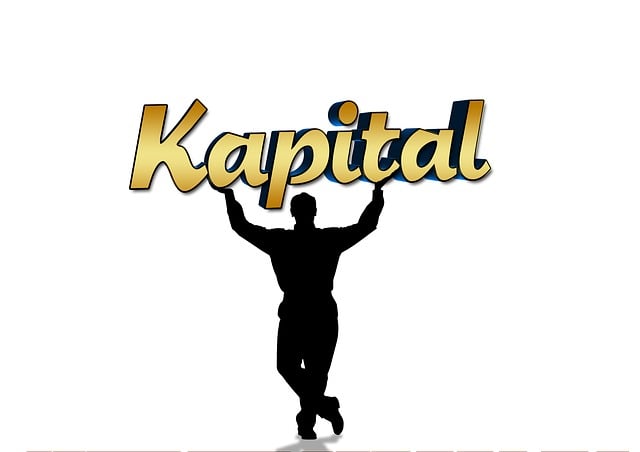Debt consolidation offers strategic financial relief by merging diverse debts into a single loan with reduced interest rates and flexible terms. It simplifies billing, saves on interest charges, stops collection calls, and aids credit rebuilding. Options include unsecured personal loans and home equity-backed loans. Suitability evaluation is crucial; bad credit loans may impact score. Prioritize high-interest debts, research consolidation options, and adhere to repayment plans. A strategic budget aligned with loan terms and professional financial guidance ensures post-debt success. Build stability through budget creation and focus on improving credit for future benefits.
Debt consolidation is a powerful tool for managing overwhelming debt. This comprehensive guide provides a detailed look at debt consolidation programs and plans, offering essential financial advice. We’ll break down the basics and benefits of consolidation, explore different loan types, and walk you through the application process step-by-step. Additionally, learn effective strategies for repaying consolidated debts and building long-term financial stability.
- Understanding Debt Consolidation: Basics and Benefits
- Types of Debt Consolidation Loans Explained
- Evaluating Your Suitability for Debt Consolidation
- The Step-by-Step Process of Enrolling in a Plan
- Strategies to Repay and Manage Consolidated Debts
- Building Financial Stability After Debt Consolidation
Understanding Debt Consolidation: Basics and Benefits

Debt consolidation is a financial strategy that combines multiple debts into one single loan with a lower interest rate and more manageable terms. This approach allows individuals to simplify their repayment process by paying off several creditors with a single monthly payment, instead of juggling multiple payments each month. It’s not just about convenience; debt consolidation can offer significant benefits in terms of saving money on interest charges and potentially reducing monthly payments on debt.
One of the key advantages is the decrease in interest expenses over time. When you consolidate your debts, you often secure a lower interest rate than what your creditors are currently offering. This means that instead of paying varying rates for different loans, you’ll have a fixed rate, which can lead to substantial savings. Additionally, by consolidating, individuals can stop debt collection calls tips and regain control over their financial lives. It’s an effective debt management solution that empowers people to focus on rebuilding their credit while eliminating the stress associated with multiple repayments.
Types of Debt Consolidation Loans Explained

Debt consolidation loans come in various types, each designed to cater to different financial needs and circumstances. Understanding these options is crucial for any individual seeking debt relief and managing their finances effectively. One common type is the unsecured personal loan, which offers a fixed interest rate and a set repayment period. This option is ideal for those looking to consolidate multiple high-interest credit card debts into a single, more manageable payment stream. Another popular choice is home equity loans or lines of credit, where individuals can borrow against the equity built up in their homes. These loans often have lower interest rates but require collateral.
For young adults navigating their first financial challenges, debt consolidation for young adults offers tailored solutions. These plans consider the unique financial landscapes of emerging adults, helping them manage student loans, personal debts, and establish healthy financial habits. Consolidating loans can simplify repayment by reducing multiple payments to a single, more affordable one. It’s essential to explore these options with professional financial advice to choose the best debt management solution for your specific situation.
Evaluating Your Suitability for Debt Consolidation

Evaluating your suitability for debt consolidation is a crucial step before proceeding with any financial decisions. First, assess your current financial situation to determine if you have sufficient income to cover the additional loan payments associated with debt consolidation plans. Debt consolidation loans bad credit are an option for those with less-than-perfect credit, but it’s important to understand the potential impact on your credit score.
Additionally, consider the type and amount of debts you carry, especially high-interest credit card debt. How to consolidate debt effectively involves strategically paying off these high-interest debts first while maintaining manageable monthly payments for other obligations. Consolidate credit card debt advice suggests looking into fixed-rate loans or balance transfer cards, which can significantly reduce your overall interest expenses and help you regain financial control more efficiently.
The Step-by-Step Process of Enrolling in a Plan

Enrolling in a debt consolidation program involves several clear steps to ensure a financially sound future. Firstly, individuals should assess their financial situation by listing all debts and calculating monthly expenses. This provides a baseline for understanding the scope of their financial challenges. Next, it’s crucial to research different consolidation options, comparing interest rates, repayment terms, and any associated fees from various lenders or agencies offering debt relief programs.
Once informed, individuals can choose an approach that aligns with their needs. They then apply for the selected program, providing necessary financial documentation. After approval, the lender will consolidate the debts into a single loan with a lower interest rate. The key to financially healthy after debt consolidation lies in adhering to the new repayment plan and avoiding additional unnecessary borrowing. Financial guidance for debt consolidation throughout this process helps individuals make informed decisions and navigate their journey towards debt relief effectively.
Strategies to Repay and Manage Consolidated Debts

After consolidating debts, a well-thought-out strategy is crucial for successful repayment and management. The first step involves creating a realistic budget that aligns with your consolidated loan terms. This means allocating your income towards covering the combined debt payments while ensuring you can still meet other financial obligations and cover basic living expenses. A good rule of thumb is to allocate at least 10-15% of your monthly income to debt repayment, but this may vary based on your specific situation. Regularly reviewing and adjusting your budget as needed will help you stay on track.
Additionally, prioritizing high-interest debts within your consolidation plan is essential. By focusing on paying off these debts first, you can minimize the overall interest paid over time. This strategic approach, coupled with consistent budgeting, empowers individuals to regain control of their finances and work towards becoming debt-free. Remember, seeking guidance from local debt relief counseling agencies can provide valuable financial advice tailored to your needs and help avoid potential scams in the debt consolidation process.
Building Financial Stability After Debt Consolidation

After successfully consolidating your debts, building financial stability is the next crucial step. This involves creating a robust budget and adhering to it strictly. A well-structured budget ensures that you allocate your income efficiently, prioritizing essential expenses while setting aside funds for savings and future financial goals. It’s an opportunity to break free from the cycle of high-interest payments and build a solid foundation for long-term financial health.
One of the best practices for debt consolidation is to focus on increasing your credit score. Timely repayment of consolidated debts can significantly boost your creditworthiness, enabling you to access better loan terms in the future. Additionally, consider using debt consolidation as a learning experience and seek financial advice from professionals who can guide you on managing money effectively. By implementing these strategies, you’ll not only consolidate your debts and save money but also lay the groundwork for a secure and prosperous financial future.
Debt consolidation offers a strategic path toward financial stability for many individuals. By understanding the basics, exploring loan options, assessing your situation, and following a structured process, you can effectively manage and reduce your debts. This article has provided valuable insights into navigating debt consolidation programs, empowering readers with the knowledge to make informed decisions. As you move forward, remember that seeking professional financial advice is a game-changer in achieving long-term financial well-being. Through careful planning, consistent repayment strategies, and a commitment to building financial stability, you can leave your debts behind and embrace a brighter future.
